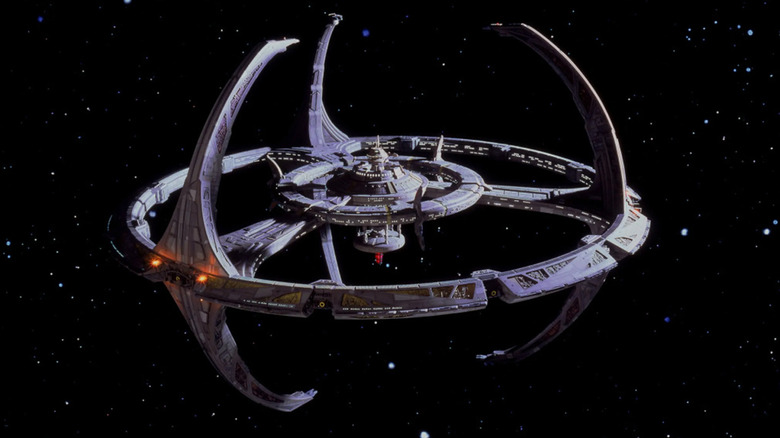Star Trek: What Does 'Deep Space Nine' Actually Mean?
After "Star Trek: The Next Generation" introduced viewers to Captain Jean-Luc Picard (Patrick Stewart) and before Kate Mulgrew debuted as Captain Kathryn Janeway on "Star Trek: Voyager," TV's resident "Star Trek" series in the mid-90s was "Star Trek: Deep Space Nine." While the former show's title essentially just references the fact that it's a sequel, and the latter's title refers to the ship that Janeway captains, the source of the name "Deep Space Nine" might not be as obvious to outsiders.
Deep Space Nine is the name of a space station. This station is a frequent location throughout "Star Trek: Deep Space Nine," serving as many episodes' principal setting, and ultimately appearing in all but five episodes of more than 170 in total. While Deep Space Nine's introduction to viewers occurs in the pilot episode of the show, it's also in a couple episodes of "The Next Generation," the final two seasons of which aired concurrently with its successor.
What makes this particular space station important to the Star Trek universe, to the extent that it's at the heart of a lengthy TV series, is its considerable political and geographic significance.
The Deep Space Nine space station is integral to Star Trek's intergalactic society
Originally, the Deep Space Nine space station was known as Terok Nor, named by the historically evil Cardassian empire. The Cardassians exploited Bajorans slaves to build it during a time that the planet Bajor was under Cardassian occupation. After about 50 years subjugation, the Cardassian empire ultimately withdrew from Bajor when it could no longer fight off a growing guerilla resistance.
Since the Cardassian empire left Bajor in a state of instability, the planet requested that the Federation help with its recovery. One notable outcome of Federation membership was that Terok Nor — renamed Deep Space Nine — became jointly run by Bajor and the Federation. It's in this state, as both a Federation asset and a testament to Bajor's independence, that the space station exists at the start of "Star Trek: Deep Space Nine."
Also key to Deep Space Nine's importance is its proximity to a wormhole that links its Alpha Quadrant location directly to the Milky Way Galaxy's Gamma Quadrant. The distance between the two regions without the aid of the Bajoran wormhole is roughly ninety thousand light years, so the expedience with which the two quadrants can be bridged through the adjacent wormhole means that Deep Space Nine is invaluable for trade as well.

